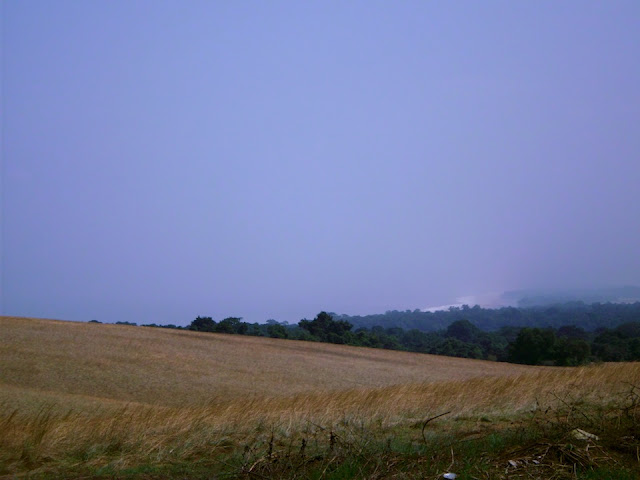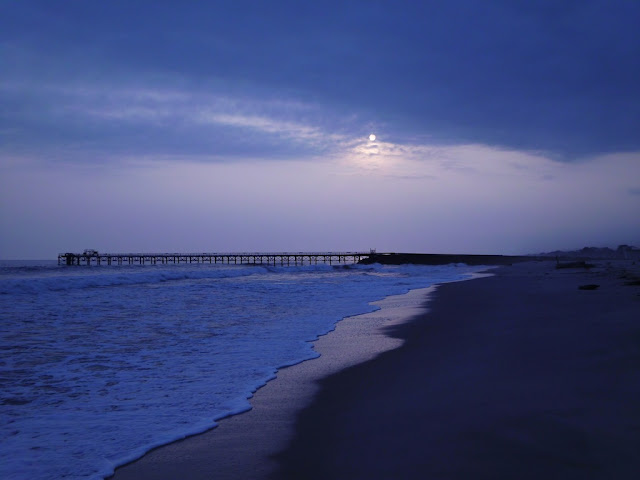 |
| Iguela and one of her youngest. This is usually the quality of photo at night, sometimes better or worse. © Smithsonian. |
 |
| This is Yenzi (notice the missing left tusk) and her three babies, in order from youngest to oldest. Yenzi is about 25-30 years old. © Smithsonian. |
I'm still working on the bios of different people who work here, and I'm also working on cleaning up/organizing the lab. It's sort of an awkward space, and it has to function for our daily office space, eating area, storage, guided tours and practical lab use. It's difficult because I've been here such a short time so I don't really know what we have to keep and what we can get rid of so there is usually a big sheaf of extraneous papers or folders that I'm always asking people about.
More recent news, Axel the intern has returned from his vacation and so he's working here as well which is nice because he's closer to my age and very exuberant, especially on the subject of frogs. Right now he's waiting for his government position since he's done with school at l'Ecole des Eaux et des Fôrets. There are three different types of colleges here. Institutions, which are private, specific and expensive, universities, which are more general, and schools, which have specialities and the government pays for in full but you then have to work in Gabon for ten years with the government after you graduate, unless you go back to school for a PhD or something.
August is coming up and that means that a lot of people are going to be going on break. Independence Day here is August 17 and there is a five day weekend or something like that because there is another holiday on the 15th, so Lisa told me that I should plan to do something fun for it because otherwise I'll probably be pretty bored with little to do. Lisa, Gigi, Perez and Clayth are all leaving within the next few weeks, which is a big bummer. Thom is coming back soon though and maybe new people will move in at the dorms.
On Monday at 11:00 AM Lisa got a call from someone that the Ministre de l'Economie et de l'Emploi et du Développement Durable du Gabon (PHEW long title) felt like swinging by the Smithsonian lab for a tour at 12:00 since he was in the area visiting. And we were like oh wow! That's pretty cool that the Minister of Economy and Labor wants to come see what we're doing. So we busily try to spruce up the lab a little and are expecting probably like five or eight people and then they get here and it's like:
30 people or something like that. Usually our tours are about five people, so having 30 people was pretty overwhelming and I'm just standing there in my Keens and jeans shaking hands with these fancy suits and shiny shoes. It is pretty exciting, though, that he wanted to come by and see what we're doing since the interest level in biodiversity research here varies greatly depending on a person's priorities.
 |
| Landry showing the Minister a small sample of our insect collection. |
Then there was this little guy, just chilling outside while all the hubbub went on inside the lab. Actually "little" is totally false, he was probably about as long as an iPhone and about as thick as an average-sized carrot.
The sun set last night was brilliant, but as it is the dry season right now there is often a thick cloud cover, which made it look like a big fiery ball.
 |
| Taken in the backyard at the dorm. The big tree on the left is a mango tree in bloom. No fruit til September. |
 |
| Beka striking a pose. The dorms are serviced by Sodexo, Gabonese style. |
When I first got here and I was the only girl, Gigi started joking that I am the princesse du foyer stagiaire and that name kind of stuck because compared to everyone else here I need help a lot. Luckily everyone au foyer is super nice and willing to deal with my French incompetence, and always making sure that I'm doing well. I'll be putting up more photos of people in my daily life, stay tuned!









































